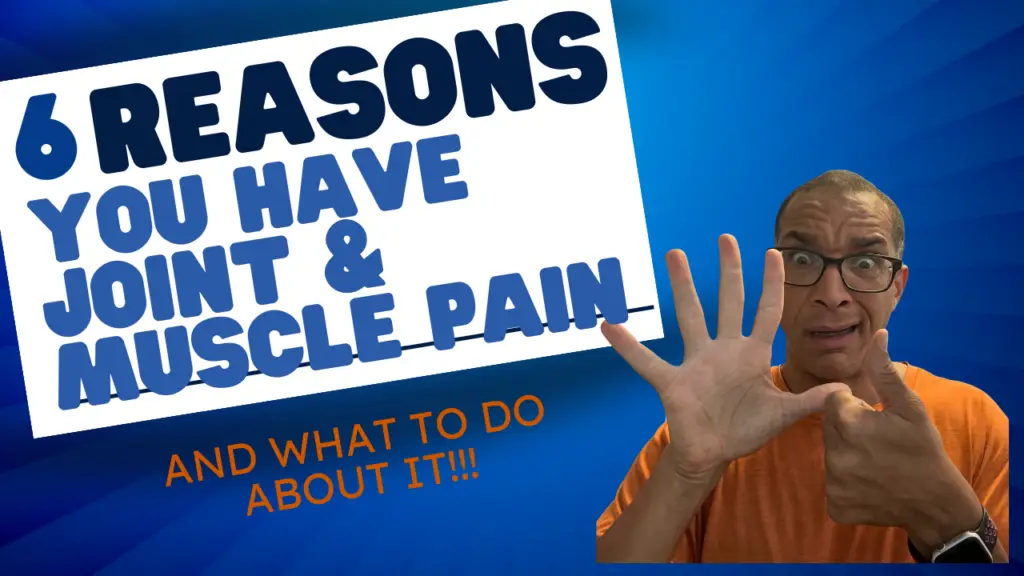You’re active. You want to stay active. But joint and muscle pain in active people is incredibly common — and frustrating. Especially when you’ve already tried everything: chiropractic care, acupuncture, foam rolling, ART, myofascial release…
And the pain keeps coming back.
Before you chalk it up to “getting older” or “this is just my body now,” there’s one more thing you should try: a root-cause approach that looks at your body as a whole — not just the parts that hurt.
In this post, we’ll break down:
- The real reasons active people get joint and muscle pain (even when doing all the “right” things)
- Why most treatments don’t stick — and what your body actually needs
- What a holistic model looks like — and how to assess yourself
Let’s dig in.

Why Most Treatments Don’t Last
Many people take a linear approach to pain relief. They chase the spot that hurts: knee, shoulder, low back. They get short-term fixes like adjustments, massage, or quick workouts. But they never look at the full picture.
Pain is often a symptom, not the actual problem.
Common band-aids include:
- Manual therapies that release tension temporarily
- Strengthening programs that ignore imbalance
- Stretches that feel good but don’t fix anything long-term
Unless you find and correct the primary root cause, your body will keep compensating. And that’s why the pain comes back.
6 Common Causes of Joint and Muscle Pain in Active People
- Overuse Without Balance
Doing more isn’t always better. Repetitive activity like walking, running, or gardening without balancing out your body leads to breakdown. Your body wants homeostasis — but if you don’t restore symmetry, it starts to hurt. - Unresolved Minor Injuries
That old ankle roll or back tweak you “walked off”? If it wasn’t re-trained, your body adapted around it. This creates dysfunction and strain elsewhere. - Poor Movement Patterns
Bad form — even in something as simple as squats or sit-ups — leads to chronic tension and pain. More importantly, your deep stabilizing muscles may be shut off or undertrained, which causes poor control and alignment. - Doing Too Much Too Soon
Jumping from low activity to high-intensity training (CrossFit, extreme yoga, etc.) without proper progression overwhelms the body. It’s not about the activity — it’s about whether your body is ready. - Dehydration and Stress
Lack of hydration makes fascia stiff like beef jerky, not supple tissue. Chronic stress keeps you in fight-or-flight mode, locking your muscles and nervous system in a painful loop. - Poor Posture and Body Positioning
Plumb line off? Gravity line disrupted? SI joint unstable? These are red flags. If your base (pelvis and spine) isn’t in balance, no amount of therapy or exercise will stick.
How to Identify the Real Root Cause
If you want relief that lasts, you must address the primary lesion — the root issue that’s throwing everything else off.
Here’s how to start assessing it yourself:
- Posture Check: Take a photo from the side. Are your ear, shoulder, hip, knee, and ankle aligned?
- Movement Observation: Have someone watch you squat, walk, or perform other activities. You may feel “normal,” but your brain often normalizes dysfunction.
- Activity Review: What do you do most often? What areas of your body are doing the most work? Those overused chains are often the source.
Once you identify a likely root cause, focus on normalizing that area — restoring mobility, strength, awareness, and function. If you choose correctly, many secondary issues will resolve more easily.
Why a Holistic Model Works
The most effective way to resolve joint and muscle pain in active people is to use a holistic model that integrates:
- Movement assessments (not just static posture)
- Manual therapy to address fascia, joint alignment, and soft tissue
- Corrective exercise to restore deep stabilization and proper motor control
- Lifestyle shifts including hydration, mindfulness, and nervous system regulation
This is how we work at SolCore Fitness & Therapy. We don’t separate the body into disconnected pieces — we work with the whole person.
When we understand your history, how you move, how you’ve adapted, and what’s missing, we can finally address the real issue — not just the symptoms.
Next Steps
You deserve to move, live, and train without nagging pain.
Here’s how to take action:
- 📘 Download our free ebook for deeper insight
- 📞 Book a free consultation to get expert help finding your root cause
All the links are in the description. Pick what fits — or try all three.
Building a foundation for a better life.
Find out more @

Leave a Reply